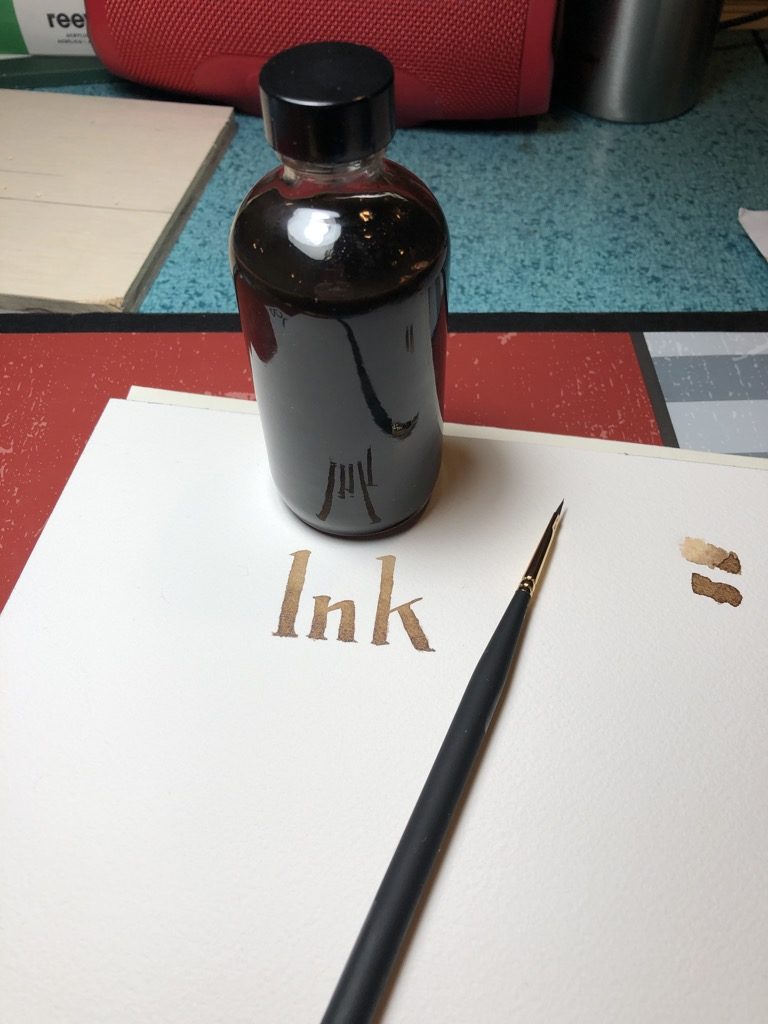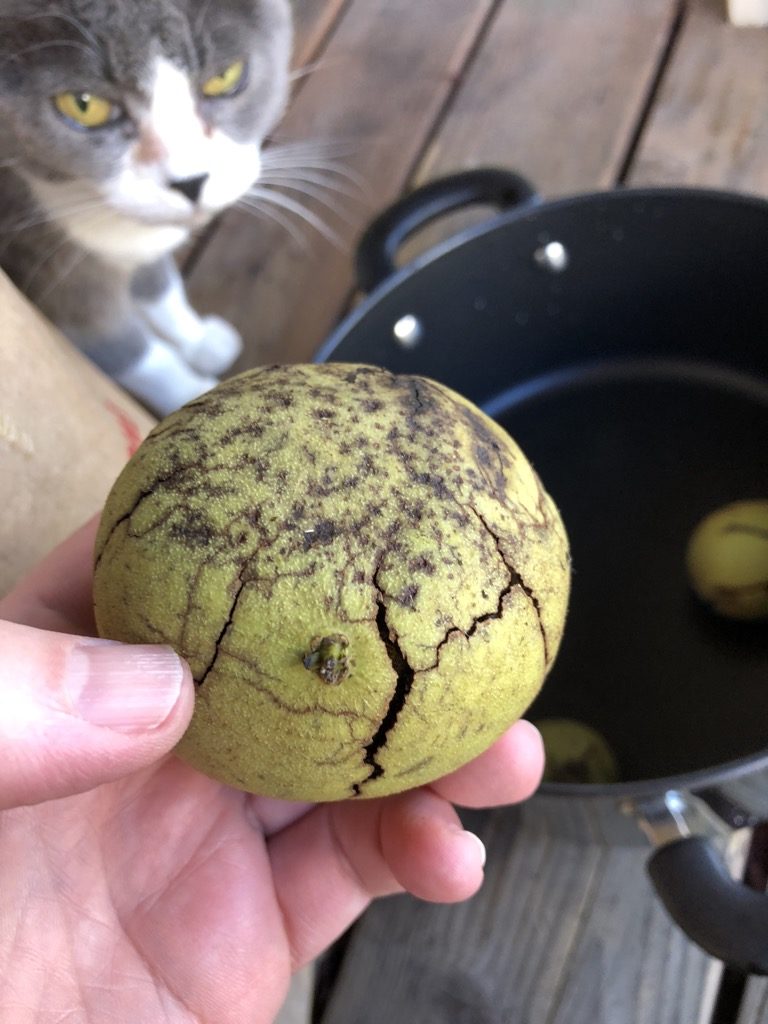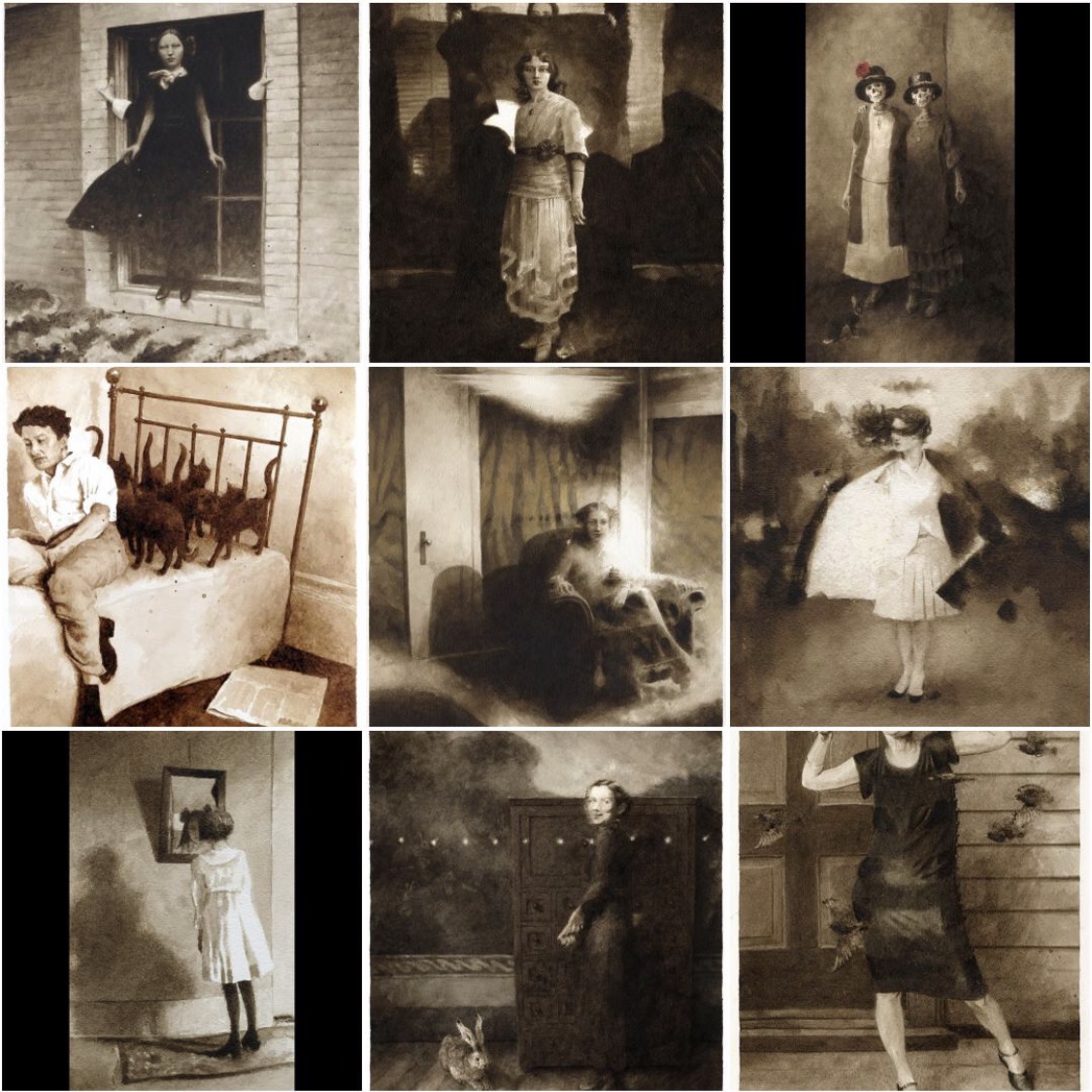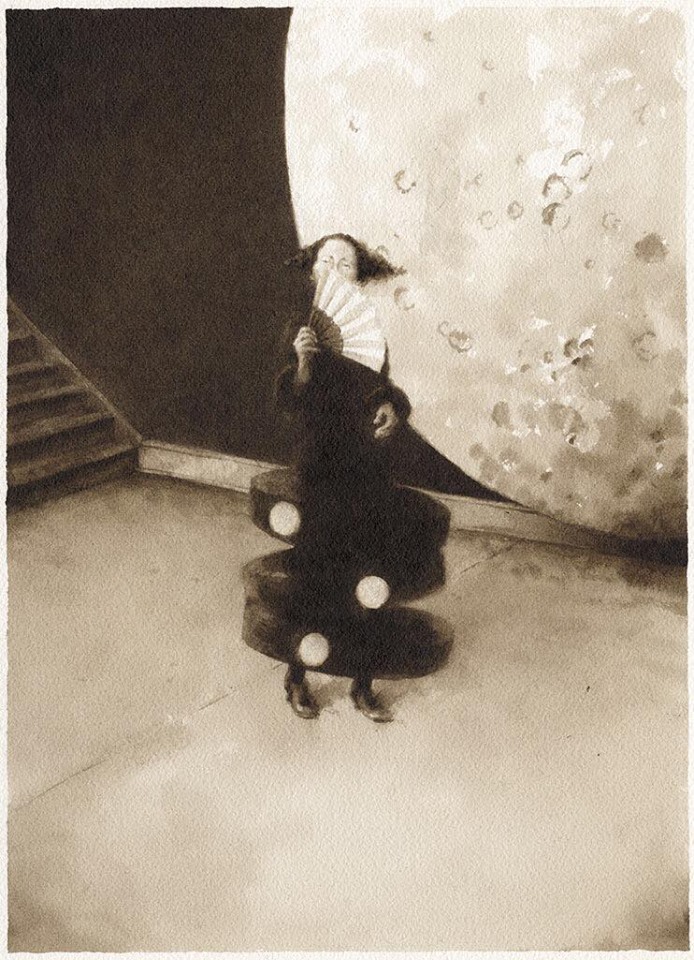I made my own black walnut ink!
I get asked about the ink I use a lot, and it seemed inevitable that I would end up making my own ink sooner or later. The walnut ink I have been using up until now was from Monograph Bookwerks on NE Alberta, and was made by them.
The most comprehensive recipe and information I’ve found about how to make walnut ink is from this post on a web forum dedicated to fountain pen enthusiasts. The post was written by a user named Fiberdrunk. Homemade Black Walnut Ink . Although I think this tells you all you need to know, I would recommend reading the entire forum thread as there is more interesting info in it, here and there.
To summarize, walnuts fall out of the tree encased in a husk, which makes them a little smaller than a tennis ball. You take the husks from the collected walnuts (the shell and the nut itself are not necessary) and let them rot until they turn black. Add distilled water, boil them, and then cook them down until you get the desired darkness of ink. Then you strain out the solids and add alcohol (10%) or whole cloves to keep down the mold, and voila! You have ink.
For the super-interested, there is also an interesting forum post on the lightfastness of walnut ink, where a user devised a way to test it, here. Walnut Ink Lightfast Test This same person documented their walnut ink making process here: How to Make Black Walnut Ink.
I’m going to keep my source of black walnuts as my own secret for now. I got get mine from a public place. If you want to know, drop me a line and I’ll tell you how I found them. All you need is a black walnut tree. The walnuts start falling in September.
The bottle in the picture at the top of this page is the entirety of my first batch, which was made from four or five walnut husks. Pictured here is the makings for batch two. If you visited my studio during the 2018 Portland Open Studios tour, then you probably saw this batch in the process of rotting away in a stew pot.
That’s it! Anybody out there made your own? Or have stories about walnuts to share?






9 Comments
Sam · December 17, 2018 at 4:44 PM
Very interesting to know how you did it!
Benz · December 24, 2018 at 11:01 AM
Thank you! It was a long time coming. :)
Lynnette McGinnis · December 22, 2018 at 1:06 AM
Interesting. I’ve never really thought about your ink actually coming from black walnuts, but do know about them. My great-grandmother used to make black walnut cake, and in recent years I’ve had black walnut fudge. I have to say it’s an acquired taste, as the black walnut has a very earthy, almost strange musty taste to them.
Benz · December 24, 2018 at 11:01 AM
Wow interesting! I recently had walnut jam, which is made from whole immature walnuts in syrup. The walnuts haven’t formed shells yet, so you can cut them up and “spread” them on toast.
Aimee · October 6, 2019 at 9:49 PM
Love this! I make nocino, a liqueur, from black walnuts. The first year, I flipped the bottle upside down and it leaked, “melting” the plaster off the wall where it dripped. It’s delicious, btw, but if I ever have any left-over, I guess I can use it as ink!
Benz · October 7, 2019 at 1:00 PM
That sounds good! I’ve had walnut preserves, which are very interesting, but not a liqueur. I’ll have to try it sometime.
Fay · January 12, 2024 at 6:19 PM
I found your work on the Internet last night around 9:00 and stalked all of the videos I could find on you until 2:30 this morning! You have no idea how much we have in common (from what I’ve read and watched)! Anyway, don’t want to come across as a creeper so I’ll stop with saying that I am 100% in love with your style, your mind and your work!
I do want to add that I went out in 5* weather today and gathered 97 walnuts. I made 3 containers of ink and am hoping to enter a watercolor (or ink color) into the local art museum this month. I am soooo stoked and appreciative of your insight, inspiration and information… THANK YOU!
Btw, I also have a collection of old photos of complete strangers. I’ve collected them for years. I attended AAU in SF, CA for photography, one of my finals was done in a “tintype” process. YOU’RE. RIGHT. UP. MY. ALLEY. I’m also “sensitive”. ;-)
Thank you for sharing with the world!
Peace ✌️
Benz · May 8, 2024 at 3:04 PM
Sorry I didn’t see this until several months later! Thank you for your kind comments.
2019 Benz and Chang Art News – Benz and Chang · March 11, 2019 at 3:26 PM
[…] NOTESI started creating my own walnut ink, and am now using it exclusively. I’ve been curious about working with sumi ink (which is a […]